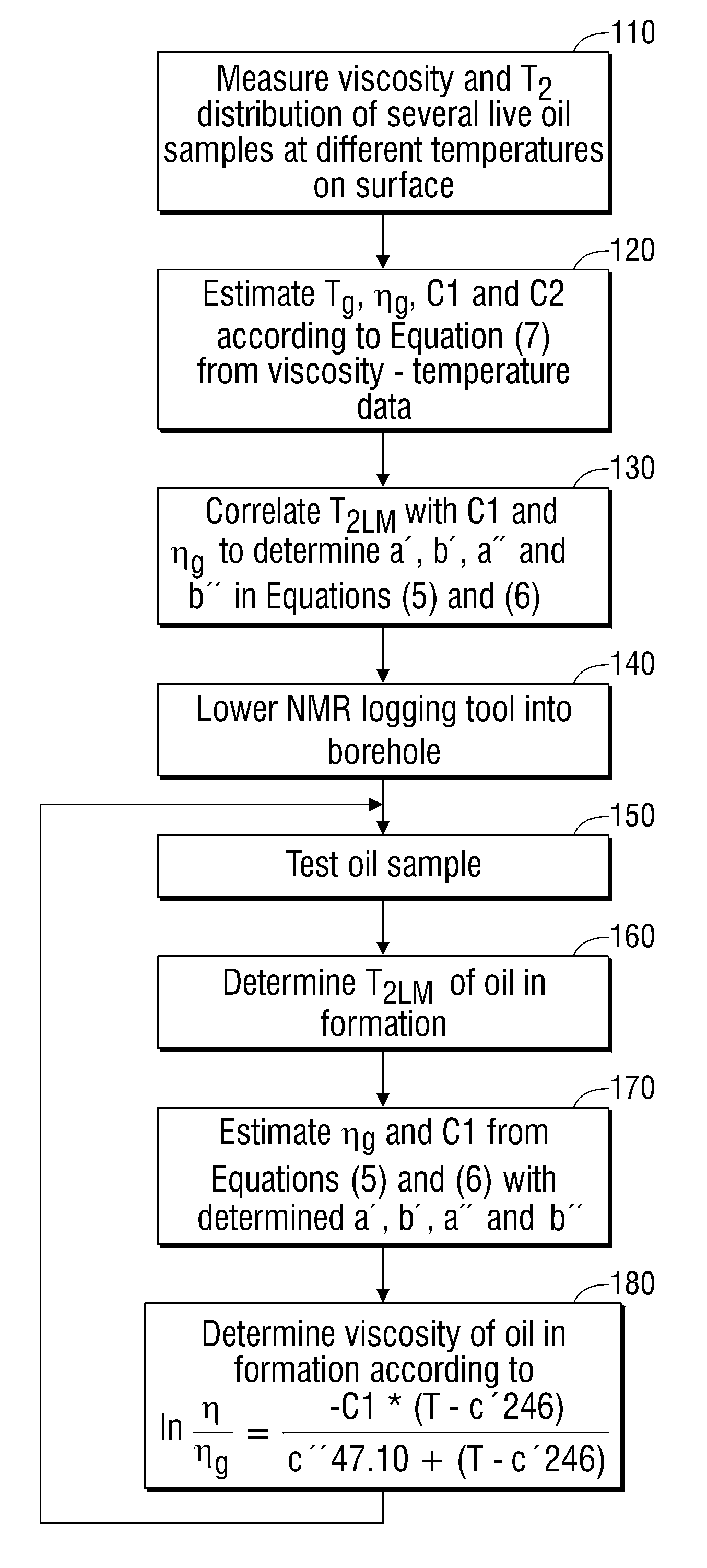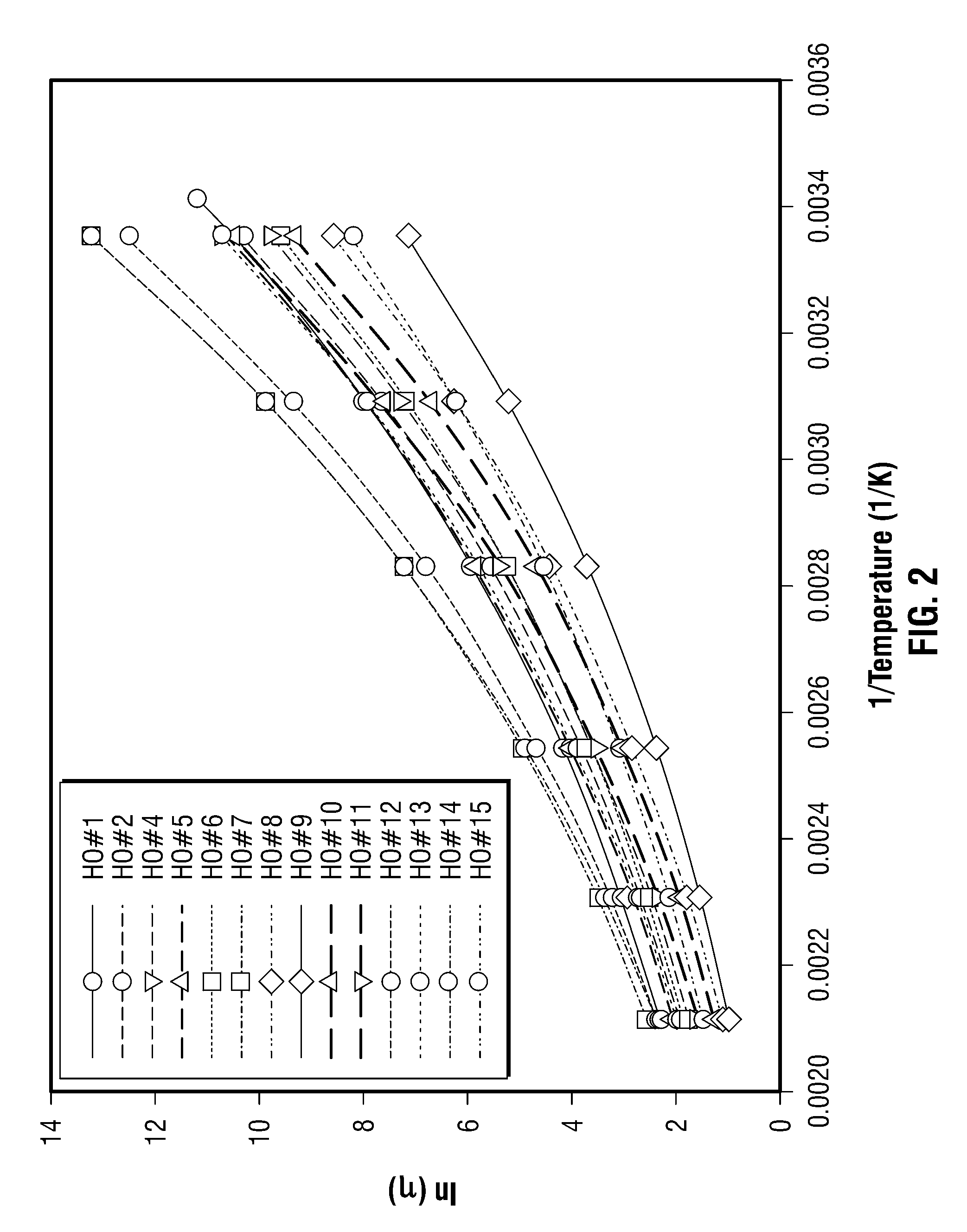Methods for determining in situ the viscosity of heavy oil using nuclear magnetic resonance relaxation time measurements
a technology of nuclear magnetic resonance and in situ measurement, applied in the field of geological formation investigation, can solve the problems of difficult and costly production, failure of high viscosity oil techniques, and poor correlation
- Summary
- Abstract
- Description
- Claims
- Application Information
AI Technical Summary
Benefits of technology
Problems solved by technology
Method used
Image
Examples
Embodiment Construction
[0021]Before discussing the methods of the invention, a theoretical understanding is useful of how a relationship between viscosity of heavy oil samples and NMR test results can be generated.
[0022]A starting point for the theoretical understanding does not relate to heavy oils at all, but rather deals with the relationship of viscosity and temperature of simple liquids. The temperature dependence of the viscosity of a liquid is readily observable as the viscosity of the liquid tends to fall (i.e., its fluidity increases) as the temperature of the liquid increases. In the 1890's, Arrhenius showed that there is a logarithmic relationship between viscosity and inverse temperature in many fluids. While this logarithmic relationship well describes certain liquids, it was found that the Arrhenius equations did not describe polymers, such as plastics, which underwent a “glass transition”, a pseudo-second order transition in which melt plastics become rigid on cooling. A model based on free...
PUM
 Login to View More
Login to View More Abstract
Description
Claims
Application Information
 Login to View More
Login to View More - R&D
- Intellectual Property
- Life Sciences
- Materials
- Tech Scout
- Unparalleled Data Quality
- Higher Quality Content
- 60% Fewer Hallucinations
Browse by: Latest US Patents, China's latest patents, Technical Efficacy Thesaurus, Application Domain, Technology Topic, Popular Technical Reports.
© 2025 PatSnap. All rights reserved.Legal|Privacy policy|Modern Slavery Act Transparency Statement|Sitemap|About US| Contact US: help@patsnap.com



